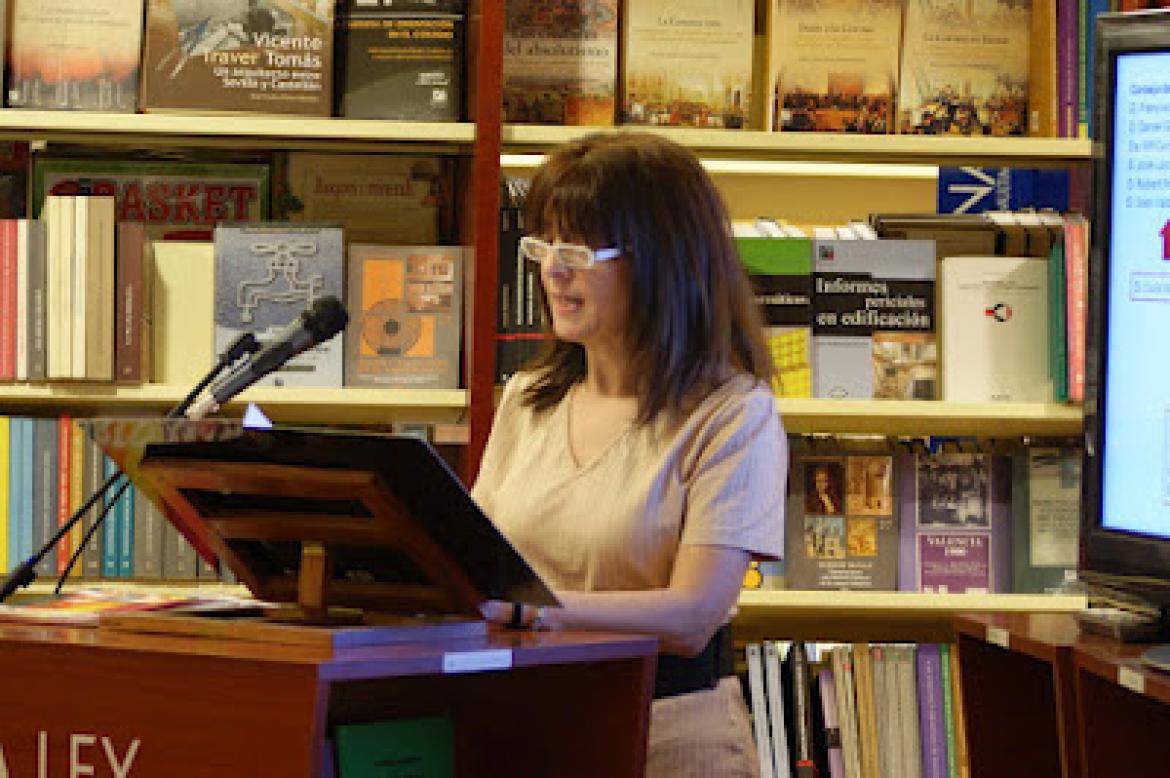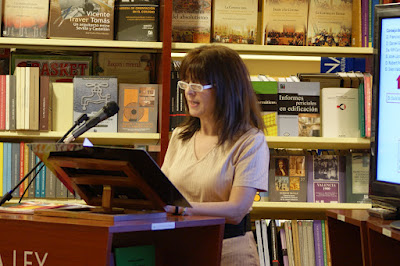Report from SEM-EE: the ISME national affiliate in Spain
Ana M. Vernia Carrasco
President of SEM-EE (Society for the Music Education of the Spanish State)
Jaume I University (Castellón, Spain)
president@sem-ee.com or vernia@uji.es
Note: this English translation is courtesy of Google Translator, with contributions from R Hallam and P Gonzales. For the original Spanish version please download the PDF at the foot of this page.
For the past few years music in Spain has been suffering. The quality of education, and music’s contribution to formation of the person, has been under attack. This is not the place to discuss the benefits of music, because these are already known and understood by both the informed population and ordinary people, but political decisions have impacted on educational quality and on one of the fundamental pillars of education: music.
Music in Spain has lost its importance in both formal and non-formal education, as well as in music schools. We have observed a reduction of hours in compulsory education, and the lack of financial support in the music schools, which has resulted in an increase in enrolment fees or simply the closing of a high number of schools.
This is detrimental to society, not only in terms of educational and social equality, but also in the sustainable development of a country, whose foundation must be supported in part by its culture, art, and music: concepts that must be vibrant in an educational program.
Music in compulsory education
Music as a subject, within the official curriculum has virtually disappeared, its presence is extremely scarce and the last teachers who have been incorporated into public education are not specialists, which further aggravates the current situation, if that were possible.
The LOMCE, the current Education Law includes three types of courses: core, specific and electives.
- Core STEM subjects (Science, Language, Mathematics and a foreign language) are compulsory throughout the Spanish territory. They must occupy at least 50% of the teaching time, and are those on which the State has placed an emphasis.
- The other two categories remain in the hands of autonomous communities. They can offer these subjects or not, and they are free to determine how many hours a week they will be taught.
In this context, educational quality is in the hands of the political management of each autonomous community. This results in an important inequality, depending on who makes the decisions in the educational matters of a particular community. Logically, a reduction of hours in music also has an impact on the teachers and the education community itself. The result is a devaluation of the arts in general and music in particular. This is not always the case. For example, in the Valencian Community or in Murcia, the subject of music took on more relevance, in spite of the LOMCE, because the politicians at that time had a certain sensitivity towards the subject.
If we look back, not so many years ago, we looked with longing at LOGSE (the law that included for the first time the standardization of musical education in all stages: nursery, primary, secondary and high school), this meant a change in the specialism of musical education at the university level.
But back to reality. Nowadays, there is a weekly hour for each of the cycles of ESO (Compulsory Secondary School) within which music has less teaching time than non-assessable activities such as mentoring or religion. Music as an option is disappearing in high school.
Music is no longer part of some university entrance tests. This is a political decision, since there are communities that maintain two or more of them, which again indicates the serious situation of inequality that we face in the field of education.
Teacher Training
At the university
The consequences of the "bad" training in music students receive in their nursery and primary education is already being noticed in teacher training since the students themselves recognize the lack of quality musical training in their own basic education. To this we must add the ECTS credits that the degree requires for musical training, and the obligation to approve students without musical knowledge, otherwise there would be an increase in the numbers of universities of students that cannot complete their academic study because their subject expertise is inadequate (because of a lack of interest, motivation and knowledge).
In the elementary conservatories
Elementary conservatories are an essential foundation prior to continuing to the professional conservatory. To access both elementary and professional conservatories it is necessary to pass selective tests (not always fair or right), to the detriment of children without previous exposure to music. In the case of elementary conservatories it is difficult for a child older than eight to obtain a place. Many children attend without intending to dedicate themselves to music. The teaching is individualized and intense with many children ending up losing interest: only five students per thousand enrolled in conservatories reach a higher degree (Gustems, 1999). In this way, adults suffer serious educational exclusion, since they do not have a formal or non-formal environment that supports them as far as music education is concerned, and with few exceptions, they only get access to elementary conservatories (Vernia Carrasco, 2015).
In the professional conservatories of music
The curricula in the professional music conservatories are still framed in the context of more than 30 years ago. This means, even after adapting the "LOGSE" programs, they are significantly remote from current needs, both for employability, to continue musical studies, or simply to be a music lover.
An important percentage of students who finish their professional studies end up teaching in Music Schools without any didactic or pedagogical training. Nor is their degree recognized in the teaching profession. This is a serious matter in that these students will exercise their teaching function without having the appropriate preparation.
Higher conservatories of music
In Spain there are 23 higher music conservatories (CSM) that offer higher studies (equivalent to university level) in music. Their main function is to prepare future music professionals.
With the controversy, discussion, reflection, debate, etc., which has for a long time been the situation in higher studies of music, its recognition as a university degree for all purposes, without going into details of demands or responsibilities, neglects the necessary content. Thus, the teaching guides and itineraries are far from a reality that calls for changes and innovations.
Clearly we express, but not without sadness, that the teaching route is a second choice. Those who do not perform end up being unenthusiastic demotivated teachers. Thus, today we have in the Conservatories a high percentage of frustrated musicians and teachers without vocation.
Music schools
With requirements undeveloped in some cases and nonexistent in others, music schools present a very different reality according to the autonomous community in which they exist. Unfortunately schools that are a benchmark and model of management and quality are few and far between because this lack of regulation allows inequalities that influence the quality of their programs, affecting the hiring and retention of teachers.
Thus we find two types of schools, those of high quality and high economic cost, which have the support of parents (families with sufficient economic resources and musical knowledge). And private schools where there is a continuous rotation of teachers because of job insecurity.
The Madrid music schools have been privatized leading to private schools such as Escuela de Música Creativa and Escuela de Música Soto Mesa. The enrolment rate tripled, the City Council eliminated the subsidy that represented 70% of the cost.
The Basque Country has one of the best regulatory frameworks in Spain with the goal of achieving, within three years, the financing one third of the costs of the schools of music. Also the Valencian community continues fighting for the quality of its schools of music as does Catalonia.
A little history
In the Villar law music as a subject was included in the area of ‘dynamic expression’. In practice, and in most instances, it was not carried out because the generalist teacher did not have enough musical training. This happened again in the 21st Century, because the generalist profile of the teacher does not allow the musical training to be assimilated effectively resulting in poor quality music teaching.
With LOGSE (General Organic Law of the Educational System), music became a compulsory subject and the university became prominent in teacher education and training. With the LOE (Organic Law of Education) of 2006, the teaching of music in elementary education was reduced sharing a weekly hour with the visual arts. In the fourth year of compulsory secondary school music was also reduced.
With LOMCE (Organic Law for the Improvement of Educational Quality, 2013), music is no longer core in either elementary or secondary schools as part of arts education. According to this law, it is up to autonomous communities to offer specific subjects and options or not, and if they do, how many hours a week they will be taught.
Public education outside compulsory secondary school
Integrated music centres
Integrated music centres are educational institutions in which general education is taught along with regulated music education of the conservatories. These offer an alternative for those students who wish to effectively combine their studies of general education and music and prevent failure at school. Moreover, the students of the Integrated music centres tend to perform very highly in their general and musical learning.
In Spain there are seven of these centres:
School Arenas-Albéniz
Location Las Palmas de Gran Canarias
Type Publico
Teaching Elemental
School Unión Musical
Location Llíria (Valencia)
Type Concertado
Teaching Elemental
School Moreno
Location Torroba Madrid
Type Publico
Teaching Professional
School Padre Antonio Soler
Location El Escorial (Madrid)
Type Publico
Teaching Elemental-professional
School Oriol Martorell
Location Barcelona
Type Publico
Teaching Elemental-professional
School Escolanía de Montserrat
Location Montserrat (Barcelona)
Type Publico
Teaching Elemental and 1º, 2º Professional
School Vázques Mella
Location Pamplona
Type Publico
Teaching Elemental
Source: Integrated Music Centres in Spain (Fuente: Villanueva Liñan, R. 2014).
Returning to the educational laws, we acknowledge that LOMCE represents a political will to provide music and other subjects equally but we must emphasise that decisions are made by the people who apply the laws in the autonomous community. Given this, it is an educational arrangement that allows educational discrimination and does not avoid all type of exclusion, as proposed by UNESCO. Therefore, the SEM-EE considers that arts education, and music in particular, for its educational relevance, its humanistic contributions, its contribution to forming better people, who are more creative, innovative, and able to adapt to multiple and different situations, must be a relevant part (as a core subject) of compulsory education and in non-formal fields, such as Music Schools.
On the other hand, given the importance of training and employability in music, the SEM-EE considers that conservatories, both professional and superior, should adapt their curricula and design new educational, practical, management models etc. that will allow for a connection between the academic world and reality.
In recent years the SEM-EE has engaged in meetings with the Ministry of Education and those responsible for music education in autonomous communities to provide data and propose actions to improve the quality of education. Recently the SEM-EE has asked to appear before members of Congress to explain the situation and the possible improvements that can be achieved for music.
We should not forget the advances made by LOGSE, with specialisms in universities and the strengthening of Music Schools, whose educational potential is aimed at society. But with the first cuts that came out of the crisis in Spain, music schools began to suffer the consequences, subsidies were reduced, forcing the Schools to reduce opportunities, raise fees ... leading to a precariousness state for some and others having to close. In 2013 and after years of cuts, for example in the Community of Madrid different music schools (Meco, Coslada, Getafe, Navalcarnero, San Lorenzo del Escorial, Majadahonda, Mejorada del Campo, Galapagar, Alcobendas, Torrejón de Ardoz, and many others) were left without funding from local government.
This situation is also unequal in other parts of the Spanish territories. Between 1992 and 2003 some autonomous communities such as the Basque country, Navarra, Cataluña, Canarias, Andalusia, Balearic Islands, La Rioja, Castilla - La Mancha, Aragon and Valencia, even developed a music act that aimed to guarantee funding to the schools. However, this law has not succeeded in its aims and each region has developed its own regulations.
In the last Gala of the Goya, Fernando Velázquez, born in Vizcaya and winner of the prize for the original music of “un monstruo viene a verme”, came to see me. Included among his thanks and acknowledgements was one dedicated to the music school of his town. The Basque Country has one of the best regulatory frameworks in Spain with the goal of achieving, within three years, the financing of one third for the music schools. The Valencian Community, through the Federation of Musical Societies, tries to continue contributing to society that cultural, artistic and social wealth that has always distinguished this geographical part of Spain.
Associations such as ISME (International Society of Music Education) enable the situation in different countries to be monitored and facilitate advocacy. SEM-EE, by being registered with ISME, provides important support for the place of music education in society, in education and the culture of a country, because a society without music is like a country without citizens.
BIBLIOGRAPHY
Gustems Carnicer, J. (1999). ¿Especialistas o generalistas? Currículum oculto en la formación universitaria de maestros en educación musical. Eufonía, 17.
Vernia Carrasco, A.M. (2015). Las competencias personales y sociales en la enseñanza de lenguaje musical en adultos: un estudio empírico. Tesis Doctoral. Recuperada de: http://www.tdx.cat/handle/10803/301768?locale-attribute=en
Villanueva Liñán, R. (2014). La enseñanza musical instrumental en la enseñanza obligatoria. Análisis de la situación actual y la clase de cuerda como alternativa al currículo. Tesis Doctoral. Recuperada de: https://dialnet.unirioja.es/servlet/tesis?codigo=100676













